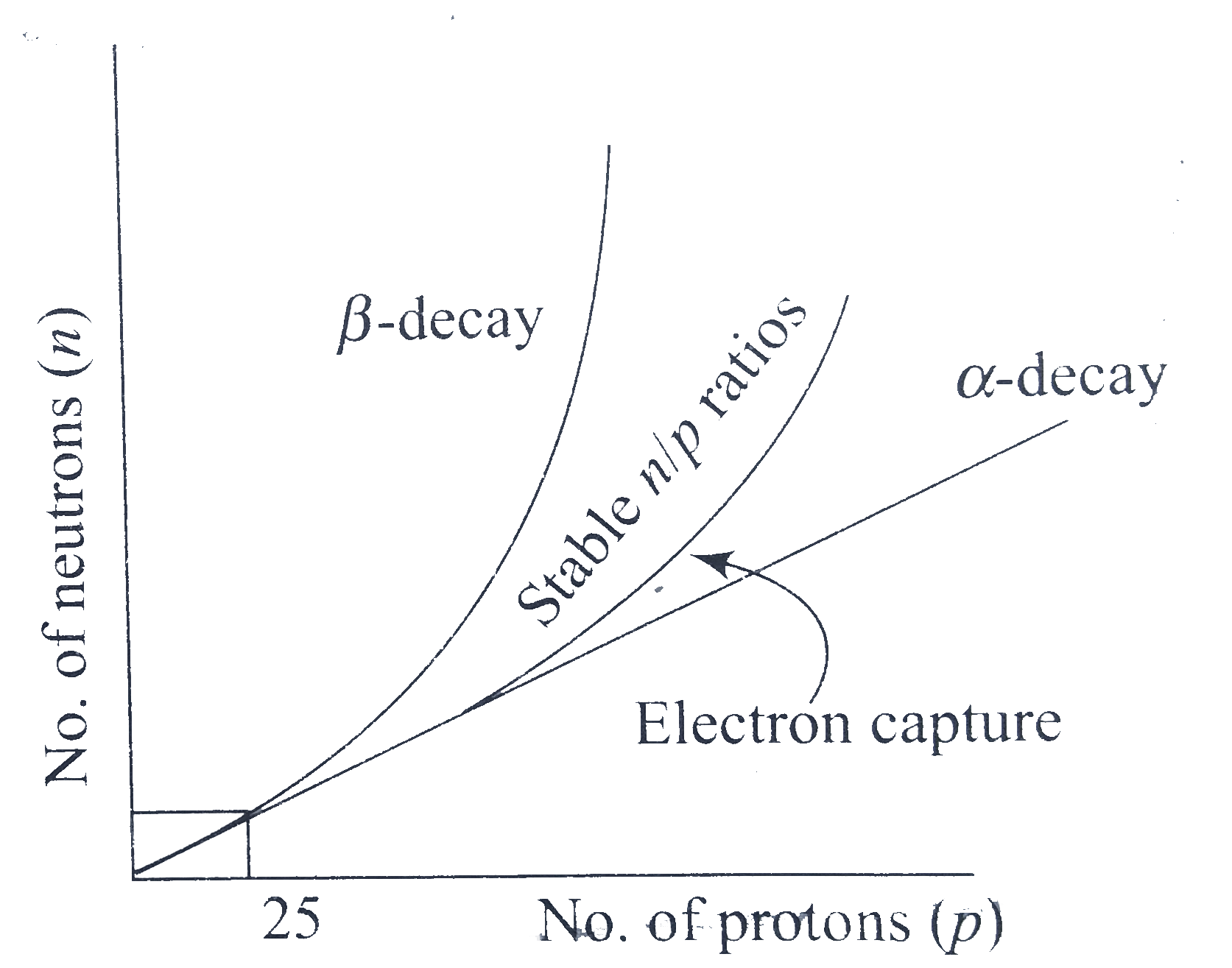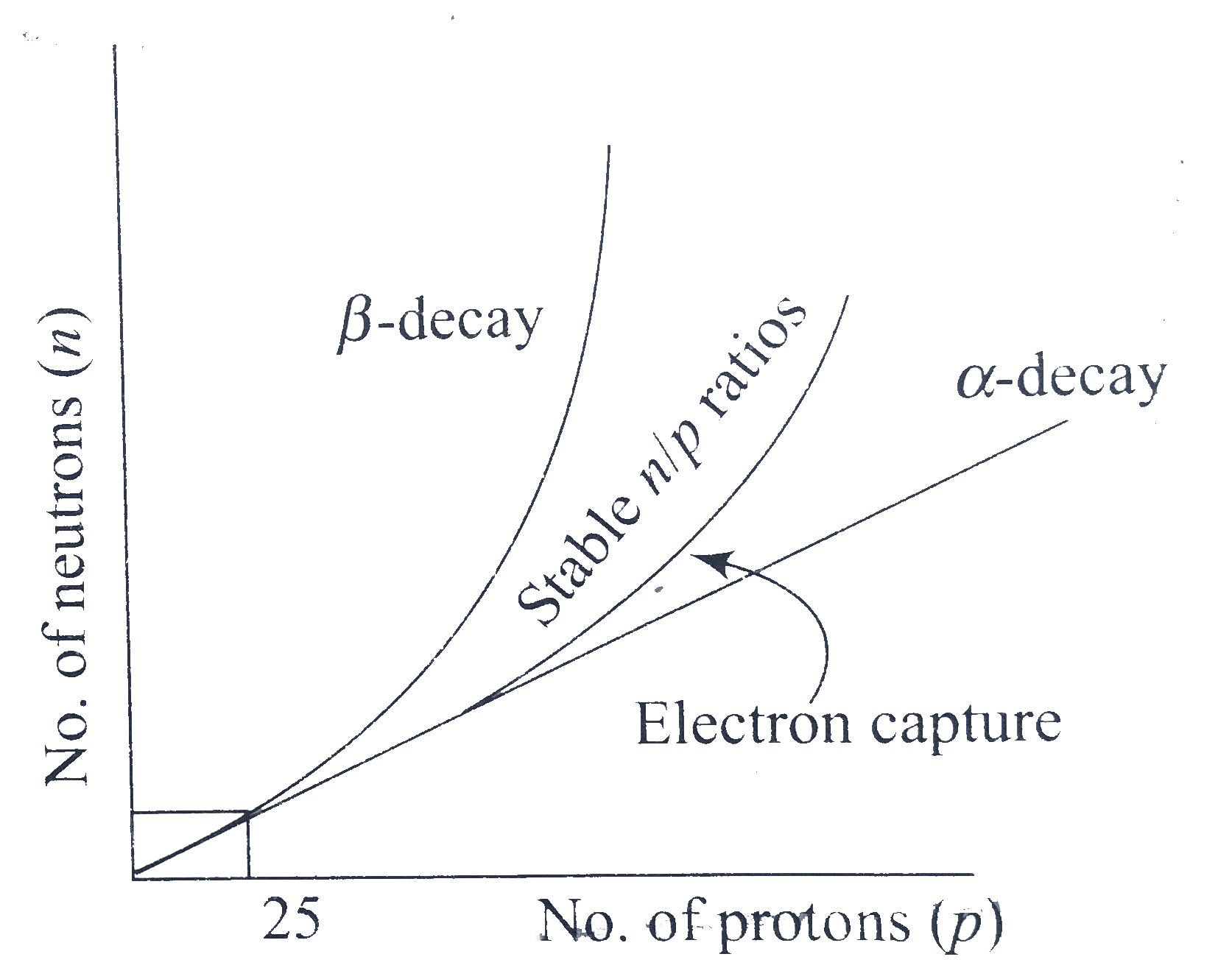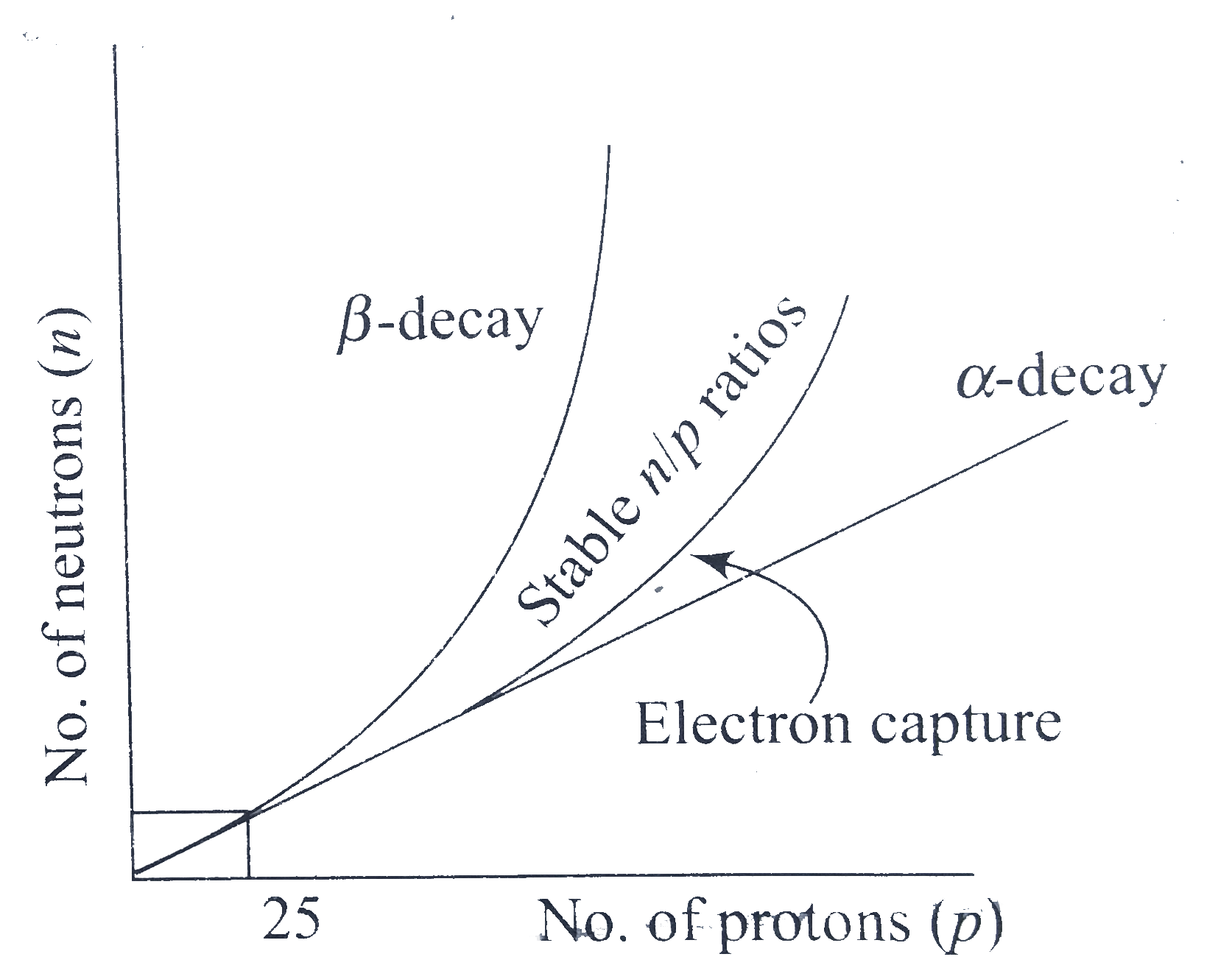Complete Solutions to Linked Comprehension of chapter NUCLEAR PHYSICS of Class 12 book with complete answers and questions
| Class 12 | PHYSICS |
| Chapter | NUCLEAR PHYSICS |
| CENGAGE PHYSICS | Linked Comprehension |
| Number Of Questions | 29 |
| Academic Year | 2023-24 |
A radioactive with decay constant `lambda` is being produced in a nuclear ractor at a rate `q_(0)` per second, where `q_(0)` is a positive constant and t is the time. During each decay, `E_(0)` energy is released. The production of radionuclide starts at time `t=0`.
Instantaneous power developed at time t due to the decay of the radionuclide is .07:28View SolutionA radioactive with decay constant `lambda` is being produced in a nuclear ractor at a rate `q_0` per second, where `q_(0)` is a positive constant and `t` is the time. During each decay, `E_(0)` energy is released. The production of radionuclide starts at time`t=0`.
Average power developed in time t due to the decay of the radionuclide is07:28View SolutionVarious rules of thumb have seen proposed by the scientific community to expalin the mode of radioactive decay by various radioisotopes. One of the major rules is called the `n//p` ratio. If all the known isotopes of the elemnts are plotted on a graph of number of neutrons (n) versus number of protons (p), it is observed that all isotopes lying outside of a ''stable'' `n//p` ratio region are radioactive as shown fig. The graph exhibits straight line behaviour with unit slope up to `p=25`. Above `p=25`, tgose isotopes with `n//p` ratios lying above the stable region usually undergo beta decay. Very heavy isotopes `(pgt83)` are unstable because of their relativley large nuclei and they undergo alpha decay. Gamma ray emission does not involve the release of a particle. It represnts a change in an atom from a higher energy level to a lower energy level.

How would the radioisotope of magnesium with atomic mass `27` undergo radioactive decay?.08:43View SolutionVarious rules of thumb have seen proposed by the scientific community to expalin the mode of radioactive decay by various radioisotopes. One of the major rules is called the `n//p` ratio. If all the known isotopes of the elemnts are plotted on a graph of number of neutrons (n) versus number of protons (p), it is observed that all isotopes lying outside of a ''stable'' `n//p` ratio region are radioactive as shown f The graph exhibits straight line behaviour with unit slope up to `p=25`. Above `p=25`, tgose isotopes with `n//p` ratios lying above the stable region usually undergo beta decay. Very heavy isotopes `(pgt83)` are unstable because of their relativley large nuclei and they undergo alpha decay. Gamma ray emission does not involve the release of a particle. It represnts a change in an atom from a higher energy level to a lower energy level.

`Th-230` undergoes a series of radioactive decay processes resulting in `Bi-214` being the final product. What was the sequence of the processes that occured?08:43View SolutionVarious rules of thumb have seen proposed by the scientific community to expalin the mode of radioactive decay by various radioisotopes. One of the major rules is called the `n//p` ratio. If all the known isotopes of the elemnts are plotted on a graph of number of neutrons (n) versus number of protons (p), it is observed that all isotopes lying outside of a ''stable'' `n//p` ratio region are radioactive as shown fig.5.28. The graph exhibits straight line behaviour with unit slope up to `p=25`. Above `p=25`, tgose isotopes with `n//p` ratios lying above the stable region usually undergo beta decay. Very heavy isotopes `(pgt83)` are unstable because of their relativley large nuclei and they undergo alpha decay. Gamma ray emission does not involve the release of a particle. It represnts a change in an atom from a higher energy level to a lower energy level.

Which of the following represents the relative penetrating power of the three types of radioactive emission in decreasing order?08:43View SolutionThe radionuclide `.^(56)Mn` is being produced in a cyclontron at a constant rate `P` by bombarding a manganese target with deutrons. `.^(56)Mn` has a half-life of `2.5 h` and the target contains large numbers of only the stable manganese isotopes `.^(56)Mn`. The reaction that produces `.^(56)Mn` is
`.^(56)Mn +d rarr .^(56)Mn +p`
After being bombarded for a long time, the activity of `.^(56)Mn` becomes constant, equal to `13.86 xx 10^(10) s^(-1)`. (Use `1 n2=0.693`, Avagardo number `=6 xx 10^(2)`, atomic weight of `.^(56)Mn=56 g mol^(-1)`).
At what constant rate P, `.^(56)Mn` nuclei are being produced in the cyclontron during the bombardment?05:15View SolutionThe radionuclide `.^(56)Mn` is being produced in a cyclontron at a constant rate `P` by bombarding a manganese target with deutrons. `.^(56)Mn` has a half-life of `2.5 h` and the target contains large numbers of only the stable manganese isotopes `.^(56)Mn`. The reaction that produces `^(56)Mn` is
`.^(56)Mn +d rarr .^(56)Mn +p`
After being bombarded for a long time, the activity of `.^(56)Mn` becomes constant, equal to `13.86 xx 10^(10) s^(-1)`. (Use `1 n2=0.693`, Avagardo number` =6 xx 10^(2), atomic weight of `.^(56)Mn=56 g mol^(-1)`).
After the activity of `.^(56)Mn` becomes constant, number of `.^(56)Mn` nuclei present in the target is equal to .05:15View SolutionThe radionuclide `.^(56)Mn` is being produced in a cyclontron at a constant rate `P` by bombarding a manganese target with deutrons. `.^(56)Mn` has a half-life of `2.5 h` and the target contains large numbers of only the stable manganese isotopes `.^(56)Mn`. The reaction that produces `.^(56)Mn` is
`.^(56)Mn +d rarr .^(56)Mn +p`
After being bombarded for a long time, the activity of `.^(56)Mn` becomes constant, equal to `13.86 xx 10^(10) s^(-1)`. (Use `1 n2=0.693`, Avagardo number `=6 xx 10^(2)`, atomic weight of `.^(56)Mn=56 g mol^(-1)`).
After a long time bombardment, number `.^(56)Mn` nuclei present in the target depends upon.05:15View SolutionMany unstable nuclie can decay spontaneously to a nucleus of lower mass but differnet combination of nucleons. The process of spontaneous emission of radiation is called radioactivity substance.
Radioactive decay is a statistical process. Radiaactivity is independent of all external conditions. The number of decays per unit time or decay rate is called activity. Activity exponentially decrease with time. Mean lifetime is always greater than half-life time.
Choose the correct statemnet about radioactivity:04:09View SolutionMany unstable nuclie can decay spontaneously to a nucleus of lower mass but differnet combination of nucleons. The process of spontaneous emission of radiation is called radioactivity substance.
Radioactive decay is a statistical process. Radiaactivity is independent of all external conditions. The number of decays per unit time or decay rate is called activity. Activity exponentially decrease with time. Mean lifetime is always greater than half-life time.
If `T_(H)` is the half-life and `T_(M)` is the mean life. Which of the following statement is correct.04:09View SolutionMany unstable nuclie can decay spontaneously to a nucleus of lower mass but differnet combination of nucleons. The process of spontaneous emission of radiation is called radioactivity substance.
Radioactive decay is a statistical process. Radiaactivity is independent of all external conditions. The number of decays per unit time or decay rate is called activity. Activity exponentially decrease with time. Mean lifetime is always greater than half-life time.
n number of `alpha`-particels per second are being emitted by B atoms of a radioactive element. The half-life of element will be04:09View SolutionAll nuclei consist of two types of particles- protaon and neutrons. Nuclear force is the strongest froce. Stability of nucleus is determined by the neutron - proton ratio or mass defect or binding energy per nucleus or packing fraction. Shape of nucleus is calculated by quadrupole moment. Spin of nucleus depends on even or odd mass number. Volume of nucleus depends on the mass number. Whole mass of the atom (nearly `99 %`) is centered at the nucleus. Magnetic moment of the nucleus is measured in terms of the nuclear magnetons.
The correct statements about nuclear force is/are04:30View SolutionAll nuclei consist of two types of particles- protaon and neutrons. Nuclear force is the strongest froce. Stability of nucleus is determined by the neutron - proton ratio or mass defect or binding energy per nucleus or packing fraction. Shape of nucleus is calculated by quadrupole moment. Spin of nucleus depends on even or odd mass number. Volume of nucleus depends on the mass number. Whole mass of the atom (nearly `99 %`) is centered at the nucleus. Magnetic moment of the nucleus is measured in terms of the nuclear magnetons.
Binding energy per nucleon is maximum.04:30View SolutionAll nuclei consist of two types of particles- protaon and neutrons. Nuclear force is the strongest froce. Stability of nucleus is determined by the neutron - proton ratio or mass defect or binding energy per nucleus or packing fraction. Shape of nucleus is calculated by quadrupole moment. Spin of nucleus depends on even or odd mass number. Volume of nucleus depends on the mass number. Whole mass of the atom (nearly `99 %`) is centered at the nucleus. Magnetic moment of the nucleus is measured in terms of the nuclear magnetons.
Volume (V) of the nucleus is related to mass number (A) as04:30View SolutionThe compound unstabel nucleus `._(92)^(236)U` often decays in accordance with the following reaction
`_(92)^(236)U rarr ._(54)^(140)Xe +`_(38)^(94)Sr ` + other particles
During the reaction, the uranium nucleus ''fissions'' (splits) into the two smaller nuceli have higher nuclear binding energy per nucleon (although the lighter nuclei have lower total nuclear binding energies, because they contain fewer nucleons).
Inside a nucleus, the nucleons (protonsa and neutrons)attract each other with a ''strong nuclear'' force. All neutrons exert approxiamtely the same strong nuclear force on each other. This force holds the nuclear are very close together at intranuclear distances.
In the nuclear reaction presented above, the ''otter particles'' might be .13:20View SolutionThe compound unstabel nucleus `._(92)^(236)U` often decays in accordance with the following reaction
`._(92)^(236)U rarr ._(54)^(140)Xe +._(38)^(94)Sr ` + other particles
During the reaction, the uranium nucleus ''fissions'' (splits) into the two smaller nuceli have higher nuclear binding energy per nucleon (although the lighter nuclei have lower total nuclear binding energies, because they contain fewer nucleons).
Inside a nucleus, the nucleons (protonsa and neutrons)attract each other with a ''strong nuclear'' force. All neutrons exert approxiamtely the same strong nuclear force on each other. This force holds the nuclear are very close together at intranuclear distances.
Why is a `._2^4He` nucleus more stable than a `._3^4Li` nulceus?13:20View SolutionThe compound unstabel nucleus `._(92)^(236)U` often decays in accordance with the following reaction
`._(92)^(236)U rarr ._(54)^(140)Xe +._(38)^(94)Sr ` + other particles
During the reaction, the uranium nucleus ''fissions'' (splits) into the two smaller nuceli have higher nuclear binding energy per nucleon (although the lighter nuclei have lower total nuclear binding energies, because they contain fewer nucleons).
Inside a nucleus, the nucleons (protonsa and neutrons)attract each other with a ''strong nuclear'' force. All neutrons exert approxiamtely the same strong nuclear force on each other. This force holds the nuclear are very close together at intranuclear distances.
A proton and a neutron are both shot at `100 m s^(-1)` toward a `._6^(12)C` nuleus. Which partilce, if either, is more likely to be absorebed by the nucleus?13:20View SolutionThe compound unstabel nucleus `._(92)^(236)U` often decays in accordance with the following reaction
`._(92)^(236)U rarr ._(54)^(140)Xe +._(38)^(94)Sr ` + other particles
During the reaction, the uranium nucleus ''fissions'' (splits) into the two smaller nuceli have higher nuclear binding energy per nucleon (although the lighter nuclei have lower total nuclear binding energies, because they contain fewer nucleons).
Inside a nucleus, the nucleons (protonsa and neutrons)attract each other with a ''strong nuclear'' force. All neutrons exert approxiamtely the same strong nuclear force on each other. This force holds the nuclear are very close together at intranuclear distances.
Which of the following graphs might represent the relationship between atomic number (i.e., ''atomic weight'') and the total binding energy of the nucleus, for nuclei heavier than `._(38)^(94)Sr` ?13:20View SolutionA beam of alpha paricles is incident on a target of lead. `A` particular alpha paticles comes in 'head- on' to a particular lead nucleus and stops `6.50 xx 10^(-14)` m away from the center of the nucleus. (This point is well outside the nucleus.) Assume that the lead nucleus, which has `82` protons, remains at rest. The mass of alpha particle is `6.64 xx 10^(-27)kg`
Calculate the electrostatic potential energy at the instant when the alpha particle stops?06:36View SolutionA beam of alpha paricles is incident on a target of lead. A particular alpha paticles comes in 'head- on' to a particular lead nucleus and stops `6.50 xx 10^(-14) m` away from the center of the nucleus. (This point is well outside the nucleus.) Assume that the lead nucleus, which has 82 protons, remains at rest. The mass of alpha particle is `6.64 xx 10^(-27)kg`
What initial kinetic energy (in joule and in MeV)did the alpha particle have?06:36View SolutionA beam of alpha paricles is incident on a target of lead. A particular alpha paticles comes in 'head- on' to a particular lead nucleus and stops `6.50 xx 10^(-14)` m away from the center of the nucleus. (This point is well outside the nucleus.) Assume that the lead nucleus, which has `82` protons, remains at rest. The mass of alpha particle is `6.64 xx 10^(-27)kg`
What was the initial speed of the alpha particle?06:36View SolutionA nucleus kept at rest in free space, brakes up into smaller nuclei of masses `'m'` and `'2m'`. Total energy generated in this fission is `E`. The bigger part is radioactive, emits five gamma ray photons in the direction opposite to its velocity and finally comes torest. `["Given" h=6.6xx10^(-34)Js,m=1xx10^(-26)Kg,E= 3.63xx10^(-8) mc^(2), C=3xx10^(8)m//s)`
Fractional loss of mass in the fission is07:56View SolutionA nucleus kept at rest in free space, brakes up into smaller nuclei of masses `'m'` and `'2m'`. Total energy generated in this fission is `E`. The bigger part is radioactive, emits five gamma ray photons in the direction opposite to its velocity and finally comes torest. `["Given" h=6.6xx10^(-34)Js,m=1xx10^(-26)Kg,E= 3.63xx10^(-8) mc^(2), C=3xx10^(8)m//s)`
Velocity of small daughter nucleus is07:56View SolutionA nucleus kept at rest in free space, brakes up into smaller nuclei of masses `'m'` and `'2m'`. Total energy generated in this fission is `E`. The bigger part is radioactive, emits five gamma ray photons in the direction opposite to its velocity and finally comes torest. `["Given" h=6.6xx10^(-34)Js,m=1xx10^(-26)Kg,E= 3.63xx10^(-8) mc^(2), C=3xx10^(8)m//s)`
The wavelength of the gamma ray is07:56View SolutionNuceli `A` and `B` convert into a stable nucleus `C`. Nucleus A is converted into `C` by emitting `2 alpha`particels and `3 beta`-particles. Nucleus `B` is converted into `C` by emitting one `alpha`-particle and `5 beta`-particles. At time `t=0`, nuclei of A are `4N_(0)` and nuceli of `B` are `N_(0)`. Initially, number of nuclei of `C` are zero. Half-life of `A` (into conservation of `C`) is `1 min` and that of `B` is `2 min`. Find the time (in minutes) at which rate of disintegration of `A` and `B` are equal.
03:48View SolutionThe half-life of a radioactive nuclide is 20 hours. What fraction of original activity will remain after 40 hours?
02:16View SolutionA radioactive sample has `8.0xx10^(18)` active nuclei at a certain instant. How many of these nuclei will still be in the active state after two half-life `("in" xx10^(18))`?
01:21View SolutionA radioactive sample decays with an average life of `20 ms`. A capacitor of capacitance `100 muF` is charged to some potential and then the plates are connected through a resistance `R`. What should be the value of `R` so that the ratio of the charge on the capacitor to the activity of the radioactive sample remains constant in time?
05:07View SolutionA radioactive sample decays through two different decay processes `alpha`-decay and `beta`-decay is `6h`. What will be the ratio of number of radioactive nuclei present after `6 h`?.
02:19View Solution
Linked Comprehension questions and complete solutions for chapter NUCLEAR PHYSICS of CENGAGE PHYSICS (HINGLISH) of Class 12
